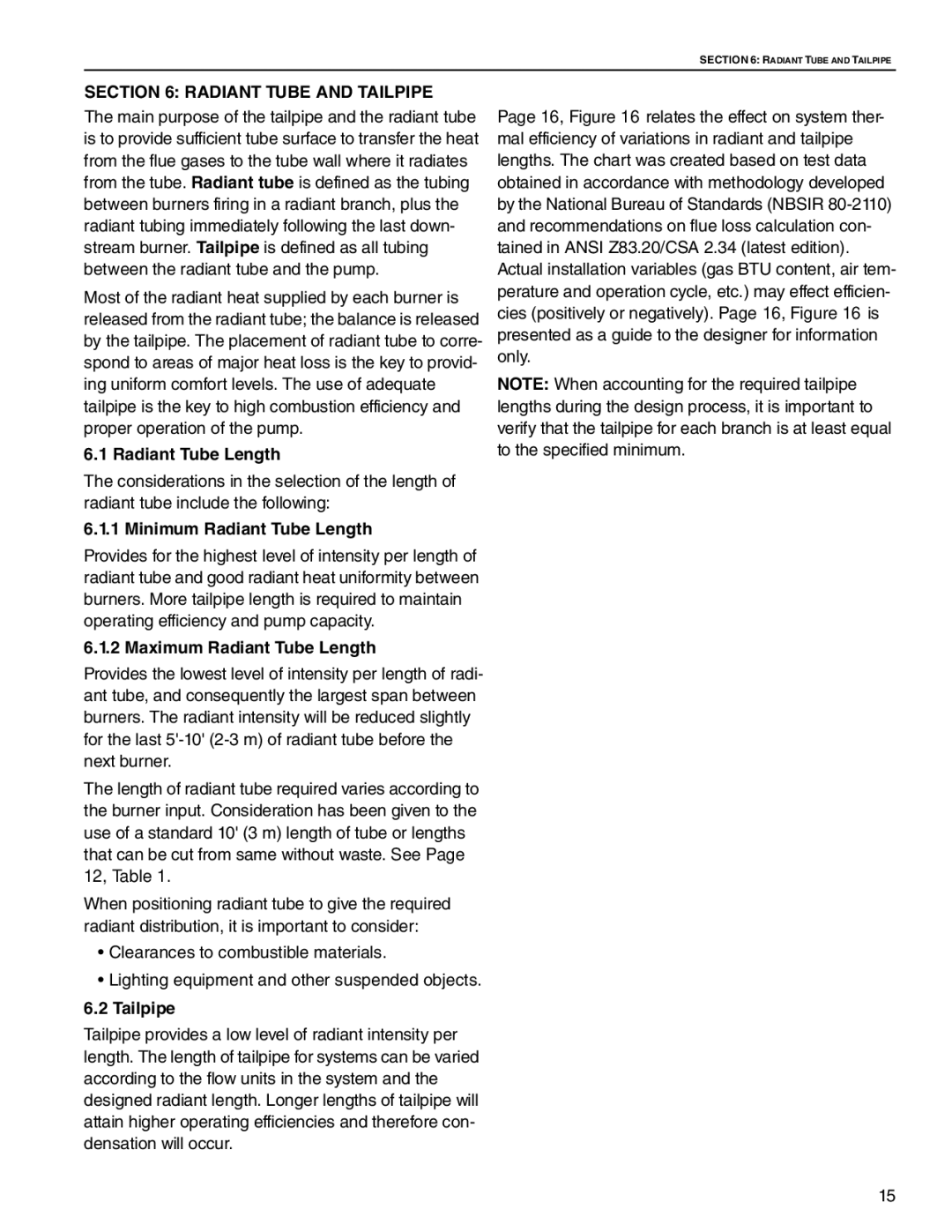CRV-B-9 specifications
The Roberts Gordon CRV-B-9 is a state-of-the-art infrared radiant heater designed for industrial and commercial heating applications. Renowned for its efficiency and effectiveness, the CRV-B-9 represents a significant advancement in the world of space heating solutions.One of the main features of the CRV-B-9 is its advanced infrared technology, which allows for precise heating without the necessity of warming the entire space. This targeted heating provides immediate comfort, as it directly warms objects and people rather than the air around them, making it particularly effective in large warehouses, manufacturing facilities, and retail spaces.
The heater boasts an impressive output of up to 80,000 BTUs, making it suitable for a wide range of applications. It utilizes natural gas as fuel, which contributes to its efficiency and cost-effectiveness. With a robust design and durable construction, the CRV-B-9 is built to withstand the rigors of industrial environments while ensuring a long product lifespan.
Another significant characteristic of the CRV-B-9 is its ability to integrate with advanced control systems. This includes compatibility with programmable thermostats and energy management systems, allowing for optimized temperature control and reduced energy consumption. The heater can be adjusted to suit different operational needs, making it a flexible solution for various heating scenarios.
The CRV-B-9 also features a compact design, allowing for easy installation in a variety of spaces. Its low-profile shape and modular capability enable users to arrange multiple units to achieve the desired heating coverage without compromising floor space, a crucial aspect for busy, high-traffic areas.
Safety is a priority with the CRV-B-9, which is equipped with various safety features such as a flame safety cutoff switch and over-temperature protection. These mechanisms ensure safe operation, providing peace of mind for users in demanding environments.
In summary, the Roberts Gordon CRV-B-9 infrared radiant heater stands out for its innovative technology, impressive output, energy efficiency, and safety features. Its flexibility and robust design make it an ideal choice for businesses looking to enhance comfort while minimizing energy costs. Whether in a manufacturing plant or a retail outlet, the CRV-B-9 provides a reliable and effective heating solution.
